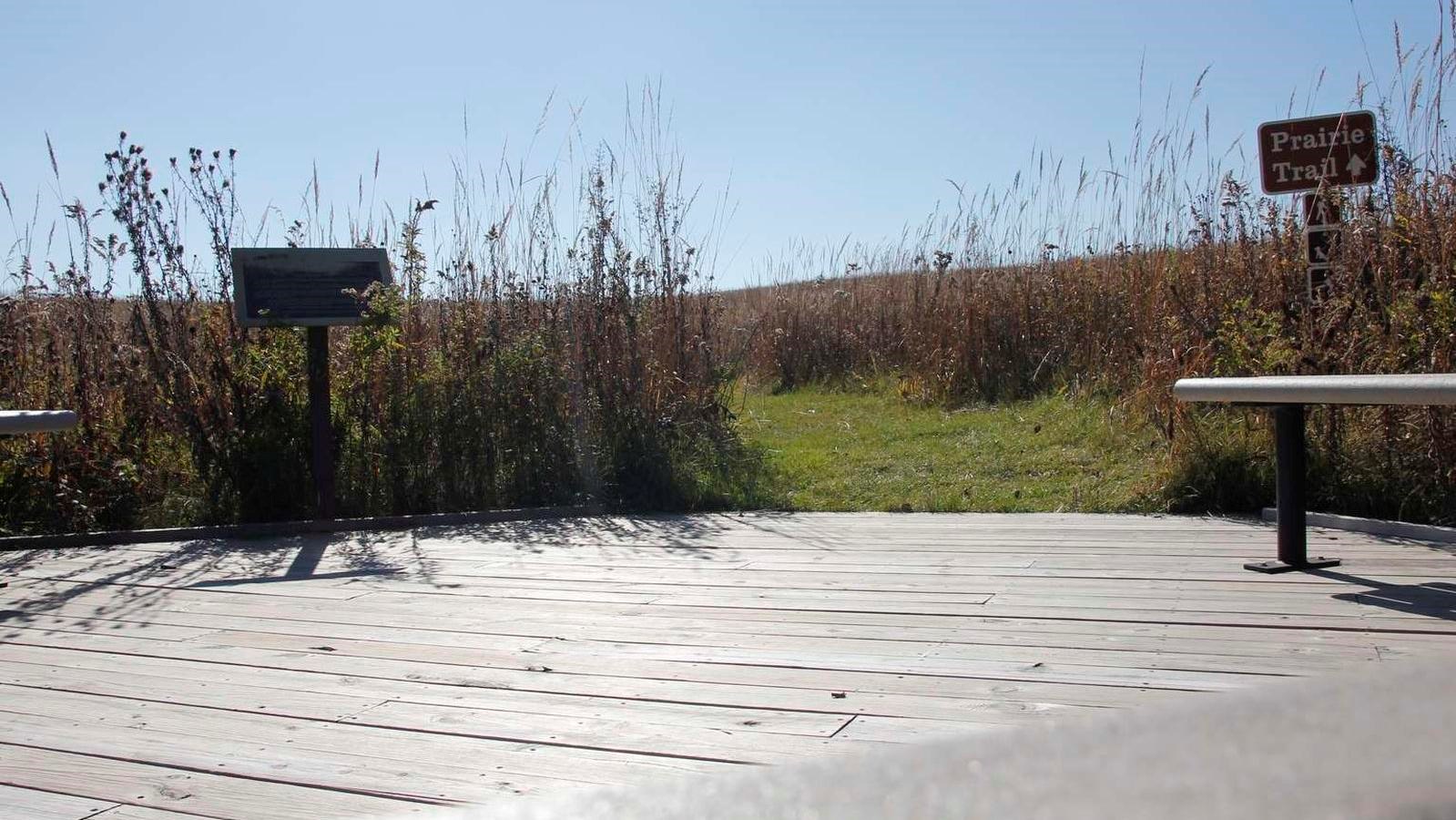Last updated: November 7, 2021
Place
Tallgrass Prairie Observation Deck

NPS Photo
Audio Description, Benches/Seating, Historical/Interpretive Information/Exhibits, Information - Maps Available, Parking - Auto, Parking - Bus/RV, Scenic View/Photo Spot, Trailhead, Trash/Litter Receptacles, Water - Drinking/Potable, Wheelchair Accessible
The 81 acres of tallgrass prairie reconstructed here offer a glimpse of an Iowa landscape that had almost vanished by the time Herbert Hoover's grandparents moved here in 1854. Prior to the settlement of West Branch, prairie covered 85 percent of Iowa. Trees were scarce until planted; the Hoovers imported lumber from farther north for construction of the president's birthplace. Tall native grasses, sprinkled with brilliantly colored wildflowers once covered these rolling hills for as far as the eye could see.
Valuable Farmland
Iowa's prairies became some of the most valuable farmland in the world. The plowed fields of the Miles Farm characterized the immediate landscape during Hoover's youth. Prairie remnants persisted along the creeks and railroad tracks where Hoover spent many boyhood hours exploring.
Young Bert Hoover: Sod Buster
Hoover enjoyed a keen interest in the natural world and often referred to boyhood experiences: "I was taken for a summer to live with Uncle Pennington Minthorn in Sioux County, Iowa, where he was breaking in a prairie farm. We lived in a sod house and I was privileged to ride the lead horse of a team which was opening the virgin soil."
Lost Resource
The tradeoff is that today less than one percent of prairie land still exists in Hoover's home state. This is one reason the National Park Service restored this historic cultivated field to much of its original splendor. Because their root systems run as deep as the plants are tall, native prairie grasses are well-adapted for controlling runoff and stabilizing areas susceptible to erosion.
Hoover's Legacy of Public Lands Conservation
Herbert Hoover, an avid fisherman and proponent of outdoor recreation, saw the value in conserving natural resources. During his presidency, the size of our national forests expanded by more than two million acres, and the land designated for new national parks and monuments increased by 40 percent. In honor of his conservation achievements and his fondness for the outdoors, this prairie offers a quiet and dignified setting to commemorate the life of the 31st president.
Trails
This prairie offers over two miles of trails for hiking, cross-country skiing, snowshoeing, and nature study. Trail maps are available from the visitor center or at the Tallgrass Prairie Observation Deck.
-
A Vanished Landscape
Tallgrass prairie was part of the Iowa landscape that had almost vanished by the time Herbert Hoover’s grandparents moved here in 1854.
- Credit / Author:
- NPS
- Date created:
- 06/22/2010
